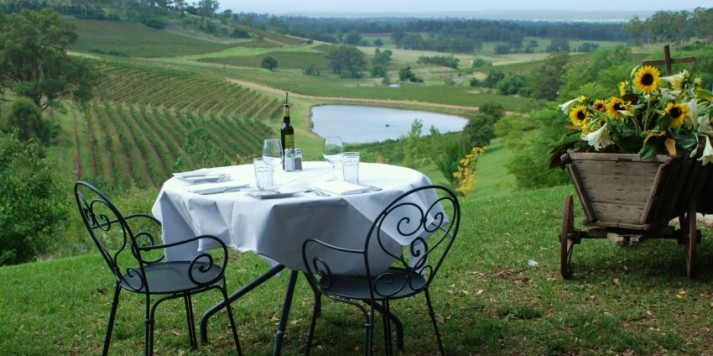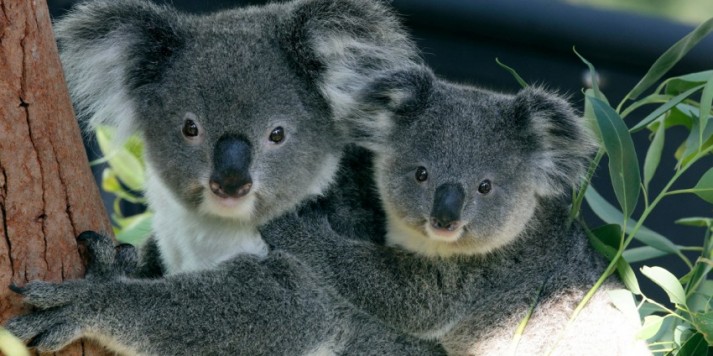Bondi Beach

This is a lively beach, white sand and thin, sunny, blue sea, beautiful scenery. If you want to know how the locals enjoy life, the best way is to come to Bondi beach. Bondi Beach formerly meaning "turning the tide of noise", very aptly describes this beach. Every sunny day, many people will gather at Sydney's Bondi Beach to enjoy the sun bathing. Sydney's Bondi Beach and other beaches, like great waves, not suitable for swimming. Most visitors or surfing or lying on the beach sunbathing. Along the Bondi to Coogee cliff Scenic Road line, the way you can take a stroll, but also to the cafe to drink a cup of coffee. Whipped cream tasted a passenger in was built in the 1920s, the elegant pavilion Bondi (Bondi Pavilion) inside. Watch the Bondi lifeguards lifesaving demonstration activities, you can even personally involved. One of iconic locations in Sydney Bondi Icebergs (Bondi Icebergs) swimming pool. With spectacular ocean views at sunset, on Bondi Beach on one side and enjoy the many restaurants in the gourmet food.
Traffic
45 minutes bus ride, or 30 minutes by train from the city center, Bondi Beach Line, or 10-minute taxi ride away; Bondi Beach and Sydney city green green phase, to Sydney's famous beach.
History"Bondi" or "Boondi" is an
Aboriginal word meaning
water breaking over rocks or
noise of water breaking over rocks. The Australian Museum records that Bondi means
place where a flight of nullas took place.
In 1809, the road builder William Roberts received a grant of land in the area. In 1851,
Edward Smith Hall and Francis O'Brien purchased 200 acres (0.81 km
2) of the Bondi area that included most of the beach frontage, which was named the "The Bondi Estate." Hall was O'Brien's father-in-law. Between 1855 and 1877 O'Brien purchased his father-in-law's share of the land, renamed the land the "O'Brien Estate," and made the beach and the surrounding land available to the public as a picnic ground and amusement resort. As the beach became increasingly popular, O'Brien threatened to stop public beach access. However, the Municipal Council believed that the Government needed to intervene to make the beach a public reserve. On 9 June 1882, the Bondi Beach became a public beach.

Bondi Beach was a working class suburb throughout most of the twentieth century with migrant people from New Zealand comprising the majority of the local population. Following World War II, Bondi Beach and the Eastern Suburbs became home for Jewish migrants from Poland, Russia, Hungary, Czechoslovakia and Germany. A stream of Jewish immigration continued into the 21st century and the area has a number of synagogues and a
kosher butcher. The area today is very multicultural with a lot of new wealthy Asian families and Samoans. The multicultural migration funded and drove the growth of the suburb throughout the 90's into the turn of the century, moving it steadily from its working class roots towards upper/middle class enclave similar to its neighbors of
Rose Bay and
Bellevue Hill which was listed as the most expensive postcode in the country in 2003, 2004, 2005.
Bondi Beach was long a centre for efforts to fight indecency in beach attire. The beach was a focal point of the
1907 Sydney bathing costume protests, organized to oppose proposed dress standards for beachgoers. The Local Government Act, Ordinance No. 52 (1935) governed the decency of swimming costumes and was in force between 1935 and 1961, and resulted in public controversy as the two-piece "
bikini" became popular after World War II.
Waverley Council's beach inspectors, including the legendary
Aub Laidlaw, were responsible for enforcing the law and were required to measure the dimensions of swimwear and order offenders against
public decency off the beach. While vacationing in Australia during 1951, American movie actress
Jean Parker made international headlines when she was escorted off the beach after Laidlaw determined her bikini was too skimpy. The rule became increasingly anachronistic during the 1950s and was replaced in 1961 with one requiring bathers be "clad in a proper and adequate bathing costume", allowing for more subjective judgement of decency. By the 1980s
topless bathing had become common at Bondi Beach, especially at the southern end.
Sydney's Water Board maintained an untreated sewage outlet not far from the north end of the beach which was closed in the mid-1990s when a deep water ocean outfall was completed.












 This is a lively beach, white sand and thin, sunny, blue sea, beautiful scenery. If you want to know how the locals enjoy life, the best way is to come to Bondi beach. Bondi Beach formerly meaning "turning the tide of noise", very aptly describes this beach. Every sunny day, many people will gather at Sydney's Bondi Beach to enjoy the sun bathing. Sydney's Bondi Beach and other beaches, like great waves, not suitable for swimming. Most visitors or surfing or lying on the beach sunbathing. Along the Bondi to Coogee cliff Scenic Road line, the way you can take a stroll, but also to the cafe to drink a cup of coffee. Whipped cream tasted a passenger in was built in the 1920s, the elegant pavilion Bondi (Bondi Pavilion) inside. Watch the Bondi lifeguards lifesaving demonstration activities, you can even personally involved. One of iconic locations in Sydney Bondi Icebergs (Bondi Icebergs) swimming pool. With spectacular ocean views at sunset, on Bondi Beach on one side and enjoy the many restaurants in the gourmet food.
This is a lively beach, white sand and thin, sunny, blue sea, beautiful scenery. If you want to know how the locals enjoy life, the best way is to come to Bondi beach. Bondi Beach formerly meaning "turning the tide of noise", very aptly describes this beach. Every sunny day, many people will gather at Sydney's Bondi Beach to enjoy the sun bathing. Sydney's Bondi Beach and other beaches, like great waves, not suitable for swimming. Most visitors or surfing or lying on the beach sunbathing. Along the Bondi to Coogee cliff Scenic Road line, the way you can take a stroll, but also to the cafe to drink a cup of coffee. Whipped cream tasted a passenger in was built in the 1920s, the elegant pavilion Bondi (Bondi Pavilion) inside. Watch the Bondi lifeguards lifesaving demonstration activities, you can even personally involved. One of iconic locations in Sydney Bondi Icebergs (Bondi Icebergs) swimming pool. With spectacular ocean views at sunset, on Bondi Beach on one side and enjoy the many restaurants in the gourmet food.


